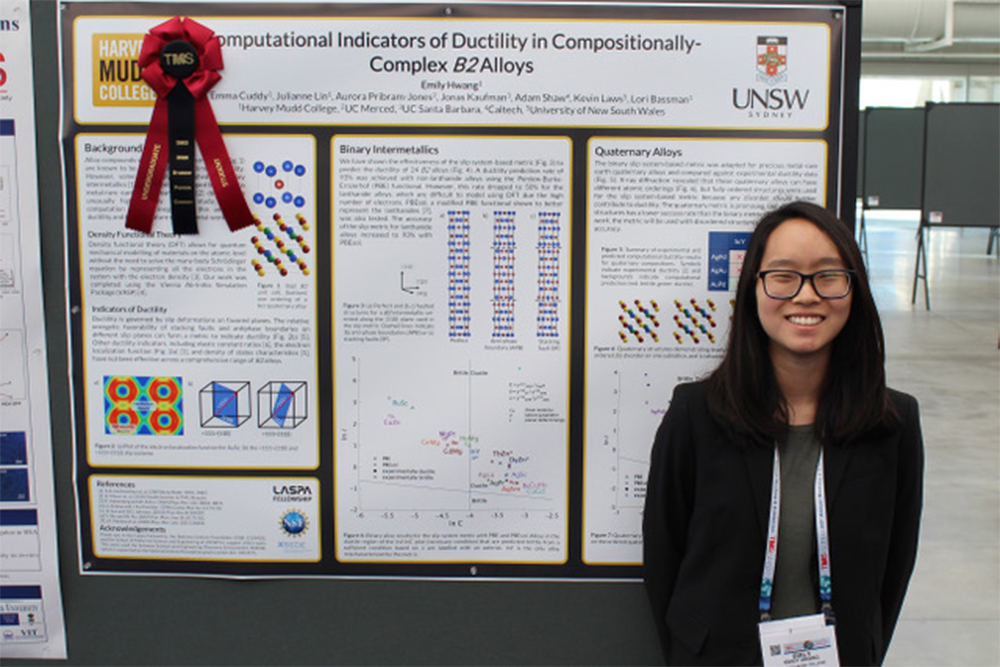Hwang Recognized for Alloy Research
May 1, 2020
Emily Hwang ’20, a chemistry major at Harvey Mudd College, was awarded the Best Poster Prize at the Minerals, Metals and Materials Society annual meeting for her work “Computational Indicators of Ductility in Compositionally Complex B2 Alloys.” Hwang is part of engineering professor Lori Bassman’s applied mechanics research group, which studies compositionally complex alloys (CCAs).
Conventional alloys, like steel, are typically made up of a majority element combined with small amounts of additional elements to improve properties. CCAs, a relatively new approach to alloys, generally have three or more elements in near-equal amounts.
“The project I presented during TMS was motivated by the work of Kyla Scott ’18 and Bailey Meyer ’18, who experimentally found a set of quaternary CCAs that were unusually ductile,” says Hwang, who was recently granted a National Science Foundation Graduate Research Fellowship. Emma Cuddy ’21 and Julianne Lin ’20 also contributed to the project. “Our work sought to find a computational indicator of ductility using density functional theory in order to more efficiently guide experimental work. We investigated and evaluated several possible indicators from literature based on binary alloys before settling on one based on the relative stability of slip systems. Emma first vetted this metric on a set of binary alloys and was able to achieve a 90% success rate. I then adapted the metric for the quaternary alloys made by Kyla and Bailey and was able to get a 70% success rate, though some work could still be done to further refine the metric. Because the metric itself is not specific to a particular family of alloys, it could potentially be applied to any binary or quaternary system to predict ductility.”
Hwang says that what interests her most about CCAs is the possibility for their practical applications. “Not only have they shown unusual and superior mechanical properties compared to conventional alloys (such as overcoming conventional limitations, like the strength-ductility tradeoff), but also the alloy design alone (including number of elements, combinations of elements, ratios of elements, etc.) allows for tailorable properties in these CCAs, which could result in a nearly limitless range of possible applications,” she says.
“Our computational metric, which involves no preliminary knowledge of these alloys, can be used to guide experimental work,” says Hwang. “I like seeing how computation and experiment can play off each other, and I hope that our ductility metric can uncover new, ductile alloy systems.”
After graduation from Harvey Mudd in May, Hwang will pursue a PhD in materials science at Caltech. Although she doesn’t plan to study alloys in grad school, she says she’s gained a new appreciation for materials that are common in everyday life (like alloys) as well as for the research process in general.
“I’m hoping to switch gears and study materials for energy storage,” she says. “Renewable energy sources such as wind and solar are intermittent, that is, they do not consistently produce energy at all times of the day or year, so one way to integrate these sources into our energy infrastructure is to store them in the grid with devices like batteries or fuel cells. I would like to study these energy storage devices in order to make a low-carbon economy more feasible and contribute to the fight against climate change.
